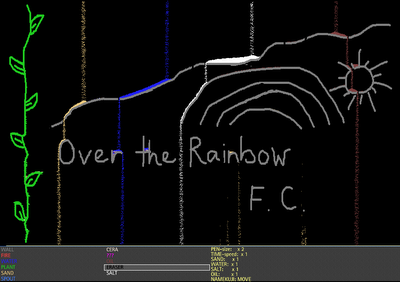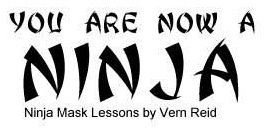Lies and science
A little knowledge is a dangerous thing
Adults lie to children all the time, for all sorts of reasons. Examples of common lies adults tell children include:
Santa will only come if you're good.
Eat your crusts, they'll make your hair curl.
Don't go in that cupboard or the bogeyman will get you.
If you go out dressed like that, you'll catch a cold.
Mummy and Daddy are splitting up - you'll understand when you're older.
One very common reason for lying to children, however, is more defensible. The universe is a very complicated place and, if a person is ever to understand anything about it, you often have to start by teaching simplified versions of reality. 'Simplified', in this specific case, actually means 'wrong', but wrong in a particular way which makes it understandable to young minds.
Of course, at a later stage in a person's education, it is necessary to admit that what has been taught previously wasn't the truth, and then move on to a slightly more complex and more accurate lie. This process continues throughout education, until the educator is forced to admit that the answer to the question 'yes, but what is the truth?' is in fact 'er, we don't know - in fact there may not even be any such thing as objective truth. We were hoping you might help us find out - there's a PhD in it for you'.
An example of this process is as follows:
Lie Number One
Weight is constant.
If you show a typical toddler a lump of modelling clay, then roll it out into a long thin sausage shape, they often expect it to weigh more, 'because it's bigger'. It's a very simple matter to show them that in fact, because you've only changed the shape and not how much clay there is, the weight is exactly the same. So they learn that unless you add something or take it away, a kilogram of clay will always weigh a kilogram - so weight is a constant.
Lie Number Two
Weight is not a constant. What's actually constant is mass.
It eventually becomes necessary to understand that weight is dependent on gravity - if you weighed your kilogram of clay on the moon, the scale would only register about a sixth of a kilo. All the mass is still there - and since the kilogram is a unit of mass, there's still actually a kilogram of clay on your scale. It's just that the force its exerting on the scale is very much less, due to the lower gravity. All these complications need not concern most people most of the time, hence Lie Number One is a forgivable simplification and the concepts of weight and mass are often used interchangeably, since the most of the time we're working in a fairly consistent gravity field - that of the Earth.
Lie Number Three
Mass is not a constant, but depends on the velocity of the object, relative to lightspeed, which is a constant.
Mass as a constant works as a lie to children, because it's very, very close to the truth for things a human can see. Unfortunately, it's just as much of a lie as constant weight. In the real world, mass increases with velocity. Most of us can safely ignore this fact, however, because unless the velocity is a large fraction of the speed of light, the difference in mass is tiny. The important thing here, however, is that tiny though that difference is, it shows that Lie Number Two is a lie. It's close to the truth, but when you're talking about physics, 'close' isn't good enough.
Lie Number Four
Lightspeed is not, in fact, a constant, but may have been significantly larger than its current value during the early life of the universe.
Now we're at the edge of current knowledge. It has been suggested that lightspeed is not the universal constant that it was once assumed to be. Certain features of the observable universe, which are difficult to explain using accepted theories, can be conveniently dealt with if the speed of light is allowed to vary. Now, it should be emphasised that this is only one possible solution to a set of very difficult questions - but it shows that physicists must constantly question even the accepted wisdom of previous theories. It is in this way that science progresses. But chances are it's still not the whole truth.
The Use of Lies
Popularised simplifications of theories like evolution and relativity have two important effects. On the positive side, they allow the public to understand a little about science. On the negative side, they allow the public to understand a little about science.
Almost everything most people know about science consists of what they can remember of whatever lies-to-children were appropriate to the level where their education stopped. This is combined with whatever they've picked up from the media since. One difficulty working scientists often have is bridging the gap between what the public thinks it knows, and what the reality is.
It is therefore very important to always consider whether what you think you know about something is in fact just a lie-to-children.
From h2g2
Adults lie to children all the time, for all sorts of reasons. Examples of common lies adults tell children include:
Santa will only come if you're good.
Eat your crusts, they'll make your hair curl.
Don't go in that cupboard or the bogeyman will get you.
If you go out dressed like that, you'll catch a cold.
Mummy and Daddy are splitting up - you'll understand when you're older.
One very common reason for lying to children, however, is more defensible. The universe is a very complicated place and, if a person is ever to understand anything about it, you often have to start by teaching simplified versions of reality. 'Simplified', in this specific case, actually means 'wrong', but wrong in a particular way which makes it understandable to young minds.
Of course, at a later stage in a person's education, it is necessary to admit that what has been taught previously wasn't the truth, and then move on to a slightly more complex and more accurate lie. This process continues throughout education, until the educator is forced to admit that the answer to the question 'yes, but what is the truth?' is in fact 'er, we don't know - in fact there may not even be any such thing as objective truth. We were hoping you might help us find out - there's a PhD in it for you'.
An example of this process is as follows:
Lie Number One
Weight is constant.
If you show a typical toddler a lump of modelling clay, then roll it out into a long thin sausage shape, they often expect it to weigh more, 'because it's bigger'. It's a very simple matter to show them that in fact, because you've only changed the shape and not how much clay there is, the weight is exactly the same. So they learn that unless you add something or take it away, a kilogram of clay will always weigh a kilogram - so weight is a constant.
Lie Number Two
Weight is not a constant. What's actually constant is mass.
It eventually becomes necessary to understand that weight is dependent on gravity - if you weighed your kilogram of clay on the moon, the scale would only register about a sixth of a kilo. All the mass is still there - and since the kilogram is a unit of mass, there's still actually a kilogram of clay on your scale. It's just that the force its exerting on the scale is very much less, due to the lower gravity. All these complications need not concern most people most of the time, hence Lie Number One is a forgivable simplification and the concepts of weight and mass are often used interchangeably, since the most of the time we're working in a fairly consistent gravity field - that of the Earth.
Lie Number Three
Mass is not a constant, but depends on the velocity of the object, relative to lightspeed, which is a constant.
Mass as a constant works as a lie to children, because it's very, very close to the truth for things a human can see. Unfortunately, it's just as much of a lie as constant weight. In the real world, mass increases with velocity. Most of us can safely ignore this fact, however, because unless the velocity is a large fraction of the speed of light, the difference in mass is tiny. The important thing here, however, is that tiny though that difference is, it shows that Lie Number Two is a lie. It's close to the truth, but when you're talking about physics, 'close' isn't good enough.
Lie Number Four
Lightspeed is not, in fact, a constant, but may have been significantly larger than its current value during the early life of the universe.
Now we're at the edge of current knowledge. It has been suggested that lightspeed is not the universal constant that it was once assumed to be. Certain features of the observable universe, which are difficult to explain using accepted theories, can be conveniently dealt with if the speed of light is allowed to vary. Now, it should be emphasised that this is only one possible solution to a set of very difficult questions - but it shows that physicists must constantly question even the accepted wisdom of previous theories. It is in this way that science progresses. But chances are it's still not the whole truth.
The Use of Lies
Popularised simplifications of theories like evolution and relativity have two important effects. On the positive side, they allow the public to understand a little about science. On the negative side, they allow the public to understand a little about science.
Almost everything most people know about science consists of what they can remember of whatever lies-to-children were appropriate to the level where their education stopped. This is combined with whatever they've picked up from the media since. One difficulty working scientists often have is bridging the gap between what the public thinks it knows, and what the reality is.
It is therefore very important to always consider whether what you think you know about something is in fact just a lie-to-children.
From h2g2









